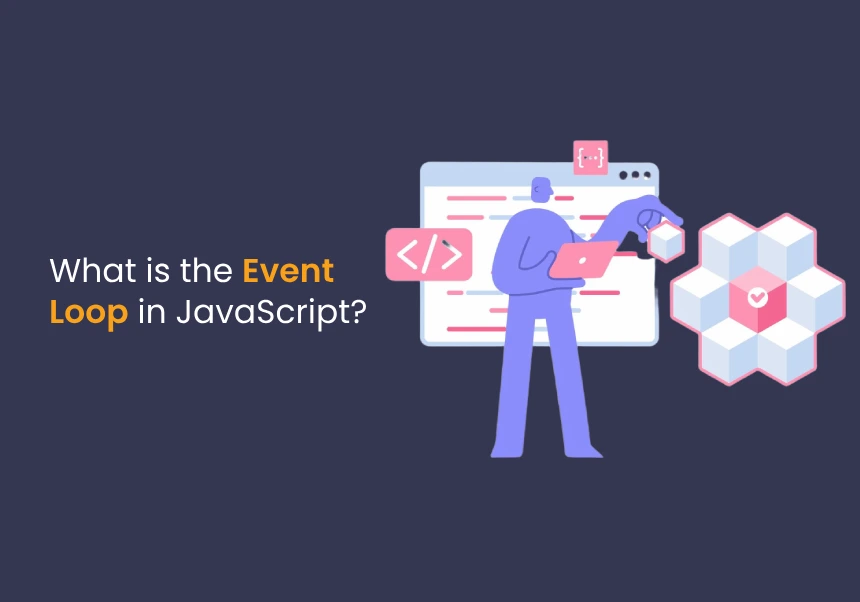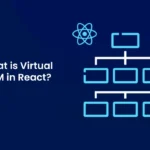The Event Loop in JavaScript is a mechanism that handles the execution of multiple pieces of code asynchronously and ensures that non-blocking operations are executed efficiently.
Contents
It is a key part of JavaScript’s concurrency model because JavaScript is single-threaded (it can only execute one task at a time).
How the Event Loop Works (Overview)
- Call Stack (Execution Stack) → Where functions are executed.
- Web APIs / Browser APIs → For asynchronous tasks like
setTimeout(), HTTP requests, DOM events, etc. - Task Queue (Callback Queue / Message Queue) → Holds callbacks (e.g.,
setTimeout()callback) waiting to be executed. - Microtask Queue (Priority Queue) → Holds Promises callbacks and
queueMicrotask()tasks.
(Higher priority than Task Queue) - Event Loop → Continuously monitors the Call Stack and Task Queues.
- If the Call Stack is empty, it picks the next task from the Microtask Queue first.
- Then it picks from the Task Queue if the Microtask Queue is empty.
Event Loop Working Flow (Step-by-Step)
- Execute the code line by line (synchronous) and push functions onto the Call Stack.
- Asynchronous tasks (like
setTimeout(), Promises, I/O operations) are handled by Web APIs. - Once an asynchronous task completes, its callback is sent to the Queue.
- Promises → Microtask Queue
- setTimeout(), setInterval(), Events → Task Queue
- Event Loop continuously checks:
- If Call Stack is empty → Push tasks from Microtask Queue first.
- If Microtask Queue is empty → Push tasks from Task Queue.
- This process repeats indefinitely.
Visual Flow Example:
markdownCopyEdit1. Call Stack → [Main Code Execution]
2. Web API → Handles async tasks
3. Microtask Queue → Promises, queueMicrotask
4. Task Queue → setTimeout, setInterval, I/O tasks
5. Event Loop → Coordinates everything
Simple Example:
javascriptCopyEditconsole.log('Start');
setTimeout(() => {
console.log('Timeout');
}, 0);
Promise.resolve().then(() => {
console.log('Promise Resolved');
});
console.log('End');
Output:
sqlCopyEditStart
End
Promise Resolved
Timeout
Explanation:
'Start'is logged.setTimeout()is sent to Web API → callback goes to Task Queue.Promise.resolve()→ callback goes to Microtask Queue.'End'is logged.- Event Loop sees Call Stack is empty:
- Microtask Queue → Executes
Promise Resolved. - Task Queue → Executes
Timeout.
- Microtask Queue → Executes
Key Points to Remember:
| Concept | Explanation |
|---|---|
| Single-threaded | JavaScript executes one task at a time. |
| Call Stack | Executes synchronous code (LIFO structure). |
| Web APIs | Handles async tasks (e.g., setTimeout()). |
| Microtask Queue | Higher priority – Promises, queueMicrotask(). |
| Task Queue | setTimeout(), setInterval(), DOM events. |
| Event Loop | Checks if Call Stack is empty → Pushes tasks from Microtask Queue first, then Task Queue. |
Priority Order (Execution Order):
- Call Stack → Synchronous code.
- Microtask Queue → Promises,
queueMicrotask(). - Task Queue →
setTimeout(),setInterval(), I/O, DOM Events.
Key Interview Points:
- Microtasks have higher priority than Tasks.
- Promises → Microtask Queue,
setTimeout → Task Queue. - Event Loop is the mechanism that orchestrates the Call Stack and Queues.
Let me know if you want any more details or need help with examples! 🚀





